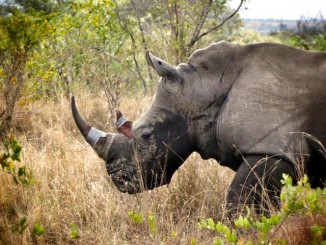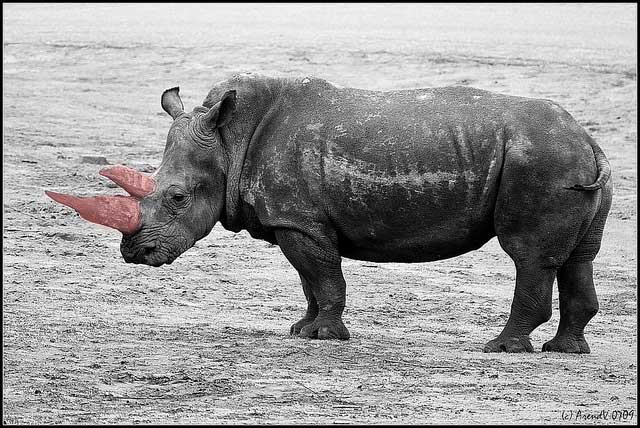Who would’ve thought the color pink could be used to scare off a bunch of heartless poachers.
The people behind the Rhino Rescue Project did, and put that thought into action by using a pink dye to render useless the tusks of rhinos in a South African game reserve.
So far, fewer than 2% of the more than 100 rhinos they’ve injected with the mixture since 2011 have been poached. The method, which has been implemented at the Sabi Sand reserve, is now being employed at other wildlife refuges.
New Green Overpass Will Let Wildlife Cross 6 Lanes of Highway
The photo above has been digitally altered to symbolize the success of the program, but in real life, the dye is actually invisible to the naked eye because it’s injected inside the horn.
The dye is completely harmless to rhinos, but can make any human who handles it sick, destroying its potential medicinal use. It also shows up on airport scanners—even if the horn has been ground into a powder—making it easier to spot poached horns.
The photo, left, from the Rhino Rescue Project’s Facebook page shows an actual rhino after the process was completed. The bandages cover the injection holes while the horn recovers.
Unlike elephant teeth or tusks, rhino horns aren’t ivory. They’re keratin, made of pretty much the same substance as human fingernails. Because it has a tubular structure, once the dye is injected under high pressure, it spreads throughout the horn and stays inside for a full growing cycle — about three to four years — after which they can be treated again.
A chemical used for killing parasites at the game reserves is added to the pink dye. The substance becomes an irritant to humans, without harming the rhinos.
(WATCH the video below from Barcroft TV) — Photos (top) Arend Vermazeren, CC; (left) Rhino Rescue Project Facebook Page
Send This Great News to Animal Lovers Everywhere…





















I am raising $$ for rhinos for my 40th birthday! http://www.crowdrise.com/jeremysrhinowish
Great idea, Jeremy! Hope it was a big success.